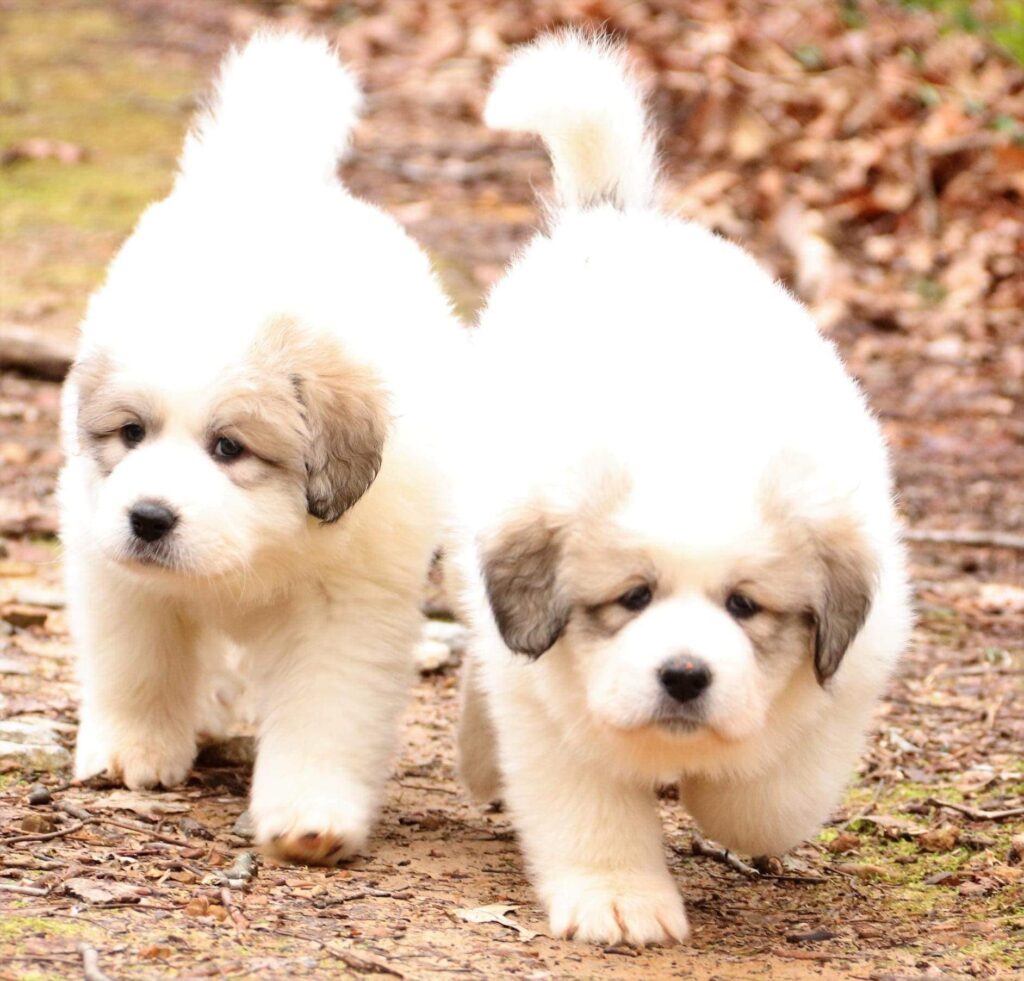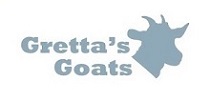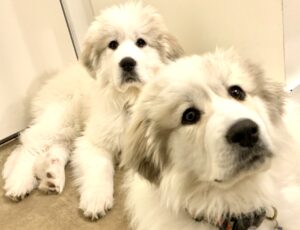 Its time to hand over the livestock guardian dog (LGD) duties to the next generation of dogs. Our new great pyrenees puppies will learn from watching Hazel and Bernice (our current dogs) guard the goat herd. Hazel and Bernice have been the most hardworking, loyal, loving and patient working dogs you could ever ask for. They will remain on the farm for their retirement and hopefully give up their duties slowly to the pups (more time for naps in their old age!). Many folks have asked how these gentle giants protect our herd and farm so I thought I would share some information about this amazing breed of working dog and how we train them to work on our small farm.
Its time to hand over the livestock guardian dog (LGD) duties to the next generation of dogs. Our new great pyrenees puppies will learn from watching Hazel and Bernice (our current dogs) guard the goat herd. Hazel and Bernice have been the most hardworking, loyal, loving and patient working dogs you could ever ask for. They will remain on the farm for their retirement and hopefully give up their duties slowly to the pups (more time for naps in their old age!). Many folks have asked how these gentle giants protect our herd and farm so I thought I would share some information about this amazing breed of working dog and how we train them to work on our small farm.
First let me introduce you to Vivian and Trudy, two of the fluffiest pups around. Vivian has badger markings on her face and has a smaller head and frame.
We have had great success with Hazel and Bernice working on our farm over the past 7 years. Ideally, you want to obtain LGDs before you have an issue with predators on your farm. We knew that we had a coyote presence on our farm when we moved here. We also had concerns about random and stray dogs that could wander onto the property and attack the herd. We routinely see and hear Bald eagles, bob cats, and foxes and they can also be a threat to goat kids and chickens. The role of the LGD is tokeep the predator threats outside the perimeter of your farm through their scent and loud booming bark.
Ideally you should have a pair of LGDs. If you have a pack of coyotes that end up entering your pastures the dogs will be able to work together to ward off the pack. One dog could not do this as the coyotes would work the dog from several angles. We have found that a pair of puppies will also have each other to play with and this in turn will burn off some of that awesome puppy energy! Hopefully, then they will have less energy to chase the goats. I spent a lot of time correcting Hazel and Bernice in the beginning to not chase the goats. This is the hardest when the goat kids are born! Bouncing baby goat kids are a huge temptation to the pups! Almost impossible to resist! We have made it a top priority for our LGDs to be raised around “their” herd from puppyhood. This helps to create a lasting bond between the dogs and their herd. It also helps to create a strong bond from the goats’ perspective as well. There is nothing more beautiful than seeing your LDG completely clean off a new born kid for a goat mama with multiple kids or let 20 baby goats climb all over them and never once growl or flinch. I have seen Bernice lay next to sick goats as if to comfort them. It truly is one of nature’s most beautiful and selfless relationships.
I recently read about a LGD that was used to protect penguins on an island that were being killed by foxes. The LGD stopped it. These amazing dogs smell, hear, and see things at a distance that you as the farmer can’t always detect. You can’t be there with the herd 24/7 either. And no, we are not considering getting penguins!
We’ve had visitors in the past ask if our LGD’s are herding dogs. Herding dogs are quite different than a LGD. Herding dogs will help you move your animals from place to place. The herding dogs move in the same style as a predator. The obvious difference is that they would not harm the animals in the process. LDGs are completely non predatory in their behavior. Their brains are wired differently from most dogs in this way. Their instinct is to be a calm presence unless of course there is a threat. We’ve watched Hazel and Bernice go from a sound nap to sprinting to the other end of the pasture if a predator threat is present.
Great Pyrenees were bred centuries ago to work with shepherds and herding dogs in the snowy Pyrenees Mountains, the natural border between France and Spain. Hazel and Bernice sleep most of the day and patrol the pasture at night. They always have access to a warm barn if they want it. Even with the bitter cold over the past couple of weeks, they preferred to be outside, curled up in snow drift. The Pyrenees coat is amazingly thick and weather proof. They have a long outer coat with a soft undercoat. We don’t ever shave them in the summer as the coat helps to cool them and shade them from the sun. They do need to be groomed and nail care is a must! We joke that we should spin their wool into sweaters! They even have double dew claws.
Vivian and Trudy are starting with short introductions to Hazel and Bernice outside of a fence. They will begin working with them in an area that the older two do not think of as “their territory” – more of a neutral territory. After several weeks we hope to incorporate them into the herd. They also need slow introductions with gentle older goats to learn how to behave around them. No chasing or nipping! It’s a gradual process that requires patience but it is beyond worth it to have a loyal and confident guardian you can count on for 8 – 10 years to watch over your farm.
There are lots of opportunities to visit the farm this spring to meet Vivian and Trudy and the rest of the farm crew! You can purchase tickets on our website for goat hikes and baby goat snuggle sessions. Check out www.grettasgoats.com for more information and click on events.


